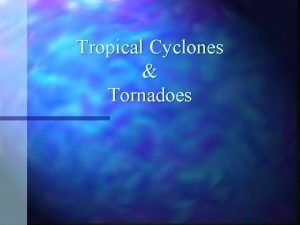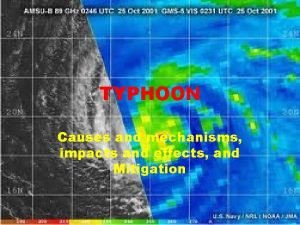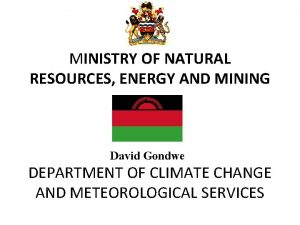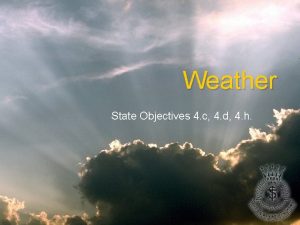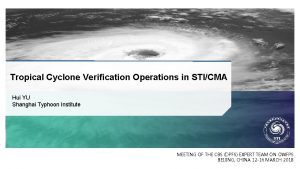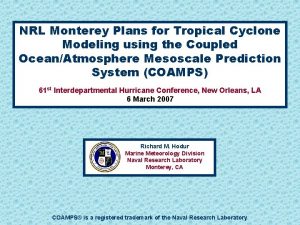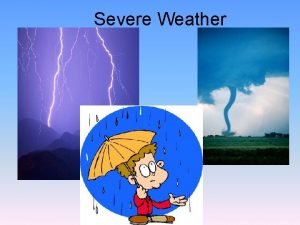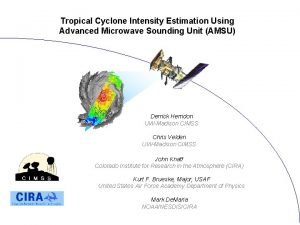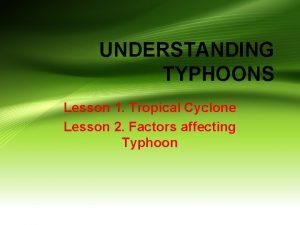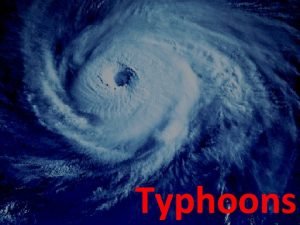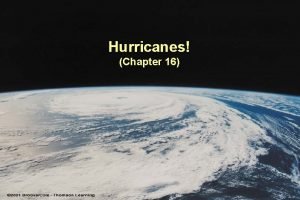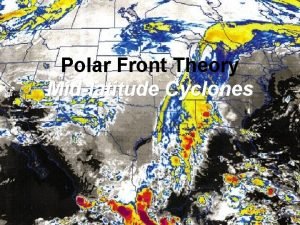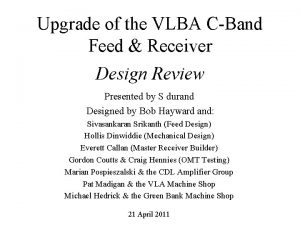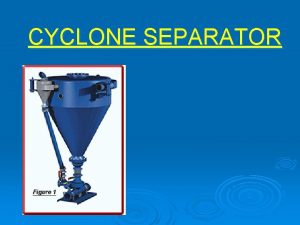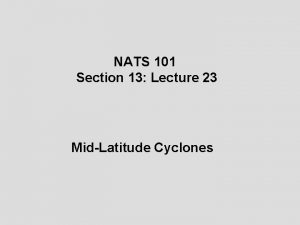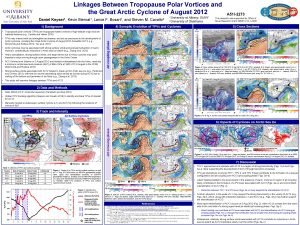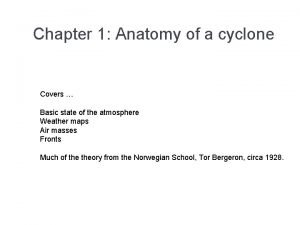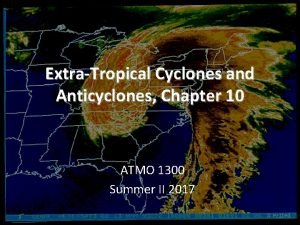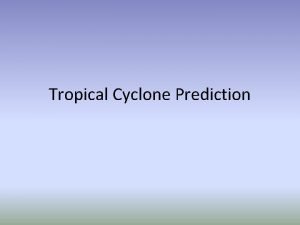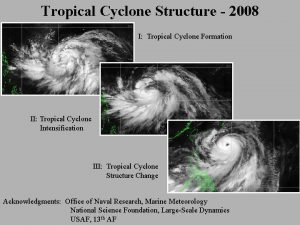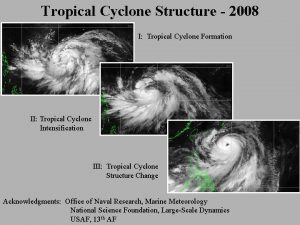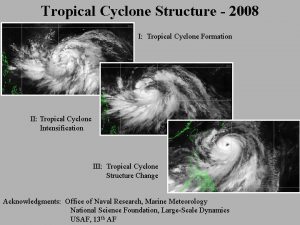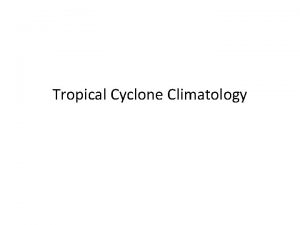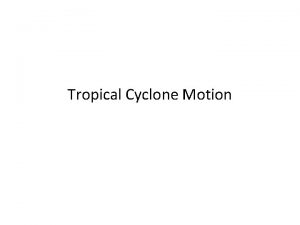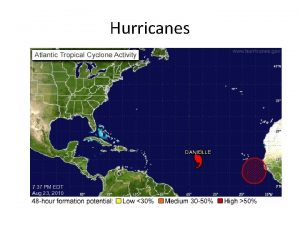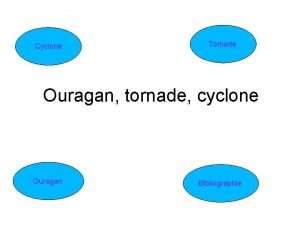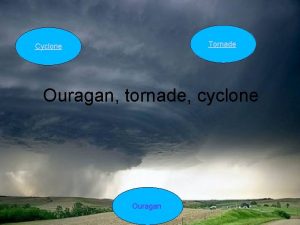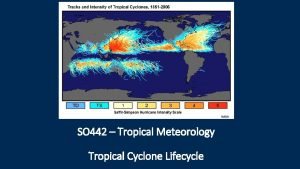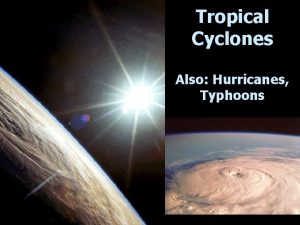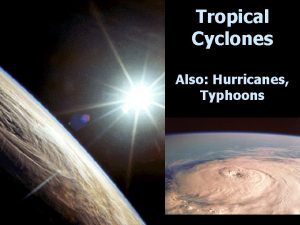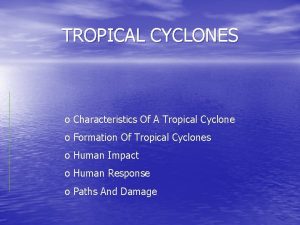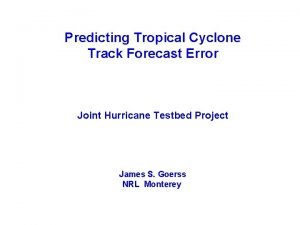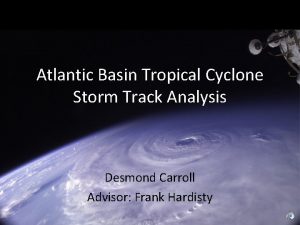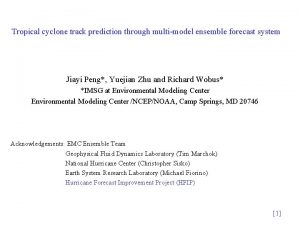Impacts of AirSea Interaction on Tropical Cyclone Track





















- Slides: 21

Impacts of Air-Sea Interaction on Tropical Cyclone Track and Intensity Liguang Wu, Bin Wang, and Scott A. Braun Submitted to Mon. Wea. Rev. June 2004

Introduction A tropical cyclone (TC) develops and maintains itself by drawing its primary energy from the underlying ocean surface. The surface wind stress associated with a TC can generate strong turbulent mixing, deepening of the ocean mixed layer (ML) and entrainment of cooler water to the surface that can lead

Introduction Khain and Ginis (1991) found that westward-moving (eastward-moving) TCs in coupled experiments were displayed farther to the south (north) than in the corresponding experiments without air-sea interaction. They attributed these track differences to asymmetric precipitation patterns which were shifted azimuthally because

Model and experimental design Hurricane model is designed by Wang (1998). Grid size: 25 km. 16 vertical layers. Two and one half layer ocean model is developed by Wang et al. (1995). The SST and wind stress are passed between the hurricane and ocean models every 3 minutes.

Modified ocean model for TC simulation The Kraus-Turner scheme to parameterize the vertical turbulent mixing (entrainment) is replaced by the Deardorff’s scheme to include the important shear instability. The downward heat flux decreases exponentially in the mixed layer and the turbulent momentum and heat fluxes are not allowed to penetrate below the

Modified ocean model for TC simulation The vertical temperature gradient in the entrainment layer is proportional to the mean vertical temperature gradient in thermocline layer.

Model and experimental design The maximum wind (Vm) is 25 ms-1 at rm=100 km. b is set to 0. 5

Ocean response in the coupled model (E 2 C) Quasi-steady state Maximum current speeds Minimum ML temperature 1. 1 ms- 1. 2 ms 1 1 3. 5 o C 4

96 h ocean responses in the coupled experiment of E 2 (E 2 C) rightward bias (a) SST anomaly (b) ML depth anomaly Function of 1. Wind stress 2. Velocity shear at the base of ML 3. Convective overturning due to the surface buoyancy fluxes (c) entrainment rate (d) thermocline depth anomaly (e) currents in the ML (f) currents in thermocline layer 4

Time series of the maximum wind speed and minimum central pressure in experiments E 2, E 1 and E 3. ○ fixed SST ● asymmetric SST □ coupled ■ symmetric 12 ms 1 32 mb 14 ms 1 10 ms- 24 mb 18 mb 1

Decomposition of the SST anomalies at 96 h resulting from hurricane-ocean interaction in the coupled experiment of E 2 (E 2 C) (a) symmetric component (b) asymmetric

(a) The lowest-level asymmetric wind field in the fixed SST experiment of E 2 (E 2 F). (b) The wind difference between the asymmetric forcing (E 2 A) and fixed SST (E 2 F) experiments of E 2 at 96 h.

TC tracks in the fixed SST (dashed) and coupled (solid) experiments for (a) E 1, (b) E 2, (c) E 3, (d) B 2, (e) B 1, and (f) B 3. β-effect

1. Rainfall rate in 2. the fixed SST 3. asymmetric forcing 4. symmetric forcing 5. experiments of E 1

TC tracks in the fixed (solid circles), symmetric (open squares) and asymmetric (open circles) SST experiments.

Rainfall rate of E 2. (a) fixed SST (b) coupled

Rainfall rate of E 3. (a) fixed SST (b) coupled

Conclusions The coupled model can reasonably produce the major features of the ocean responses to moving TC forcing. ML deepening, SST cooling, ML and thermocline layer currents The influence of the asymmetric anomalies is insignificant while the resulting symmetric cooling plays a decisive role in the weakening of TC intensity.

Conclusions The symmetric and asymmetric SST anomalies modify the asymmetry of the diabatic heating with respect to the TC center, thus affecting TC motion. When the vortex strength is relatively weak (strong), a TC in the coupled model moves to the north (south) of the TC in the corresponding fixed SST experiments.

THANK YOU

β-effect BACK f↑ ∵ζa=const. Þ∴ζ↓ toward west ζ+ -northwest ζ- Þζ decrease f↓ ∵ζa=const. Þ∴ζ↑ 2
 Tropical cyclone tornadoes
Tropical cyclone tornadoes Immature stage of tropical cyclone
Immature stage of tropical cyclone Mining
Mining Parts of tropical cyclone
Parts of tropical cyclone Sticma
Sticma Nrl tc
Nrl tc Three ingredients for a thunderstorm
Three ingredients for a thunderstorm Tropical cyclone
Tropical cyclone Understanding typhoons
Understanding typhoons How does a typhoon form
How does a typhoon form A recipe of a tropical cyclone
A recipe of a tropical cyclone Annotated cross section of a tropical cyclone
Annotated cross section of a tropical cyclone Boiler cyclone metalspray
Boiler cyclone metalspray Frontal theory
Frontal theory Cyclone commerce
Cyclone commerce Cyclone 4014c
Cyclone 4014c Cyclone chemical engineering
Cyclone chemical engineering Stage of cyclone
Stage of cyclone Arctic cyclone
Arctic cyclone Occluded front
Occluded front Norwegian cyclone model
Norwegian cyclone model Mechanical operation
Mechanical operation
